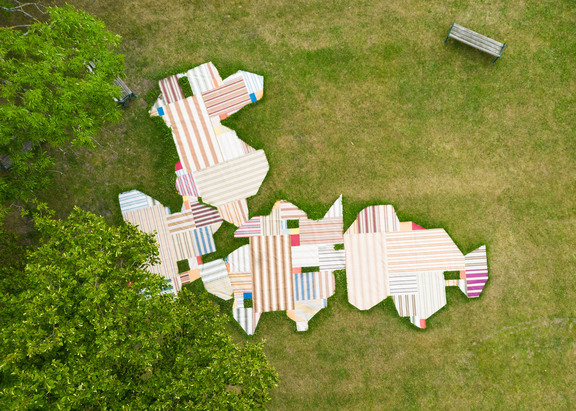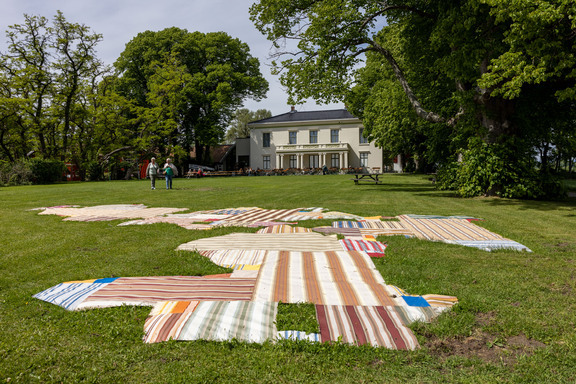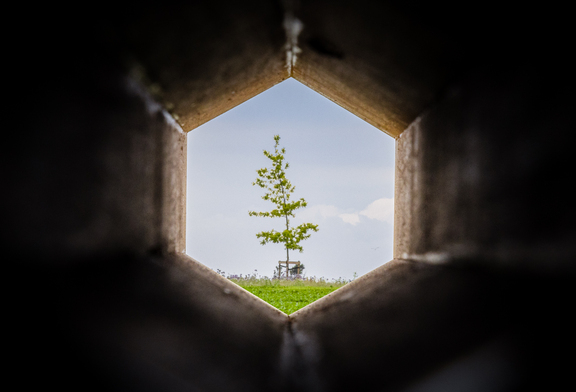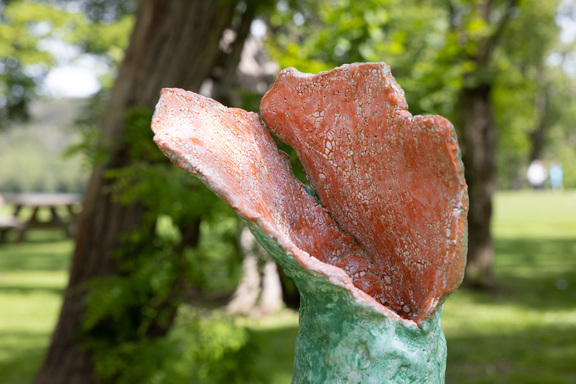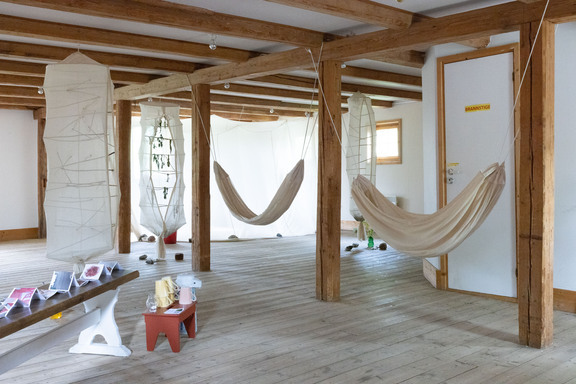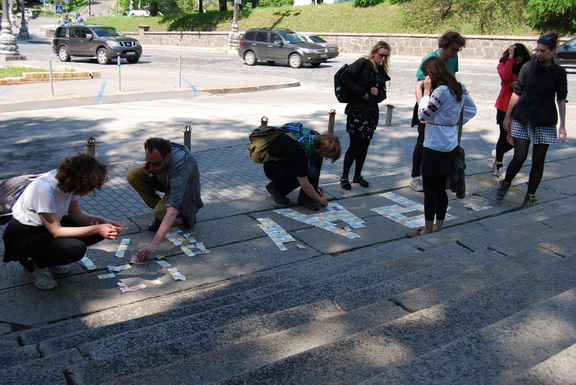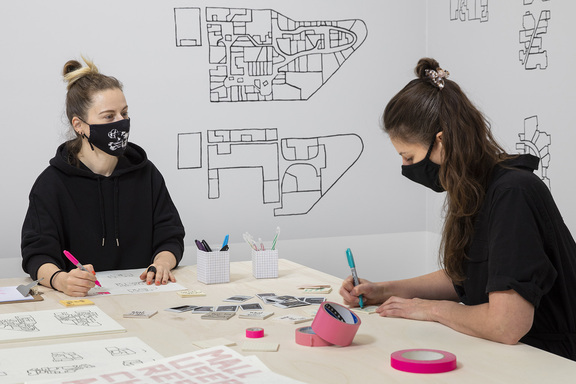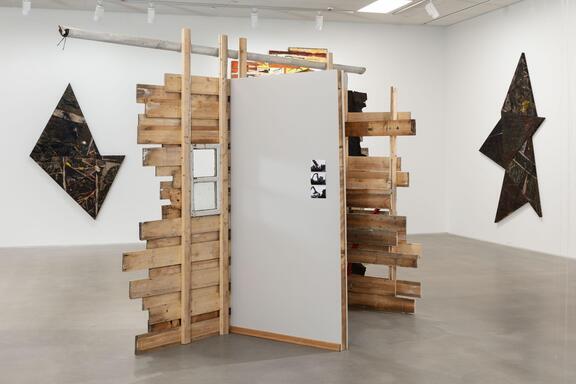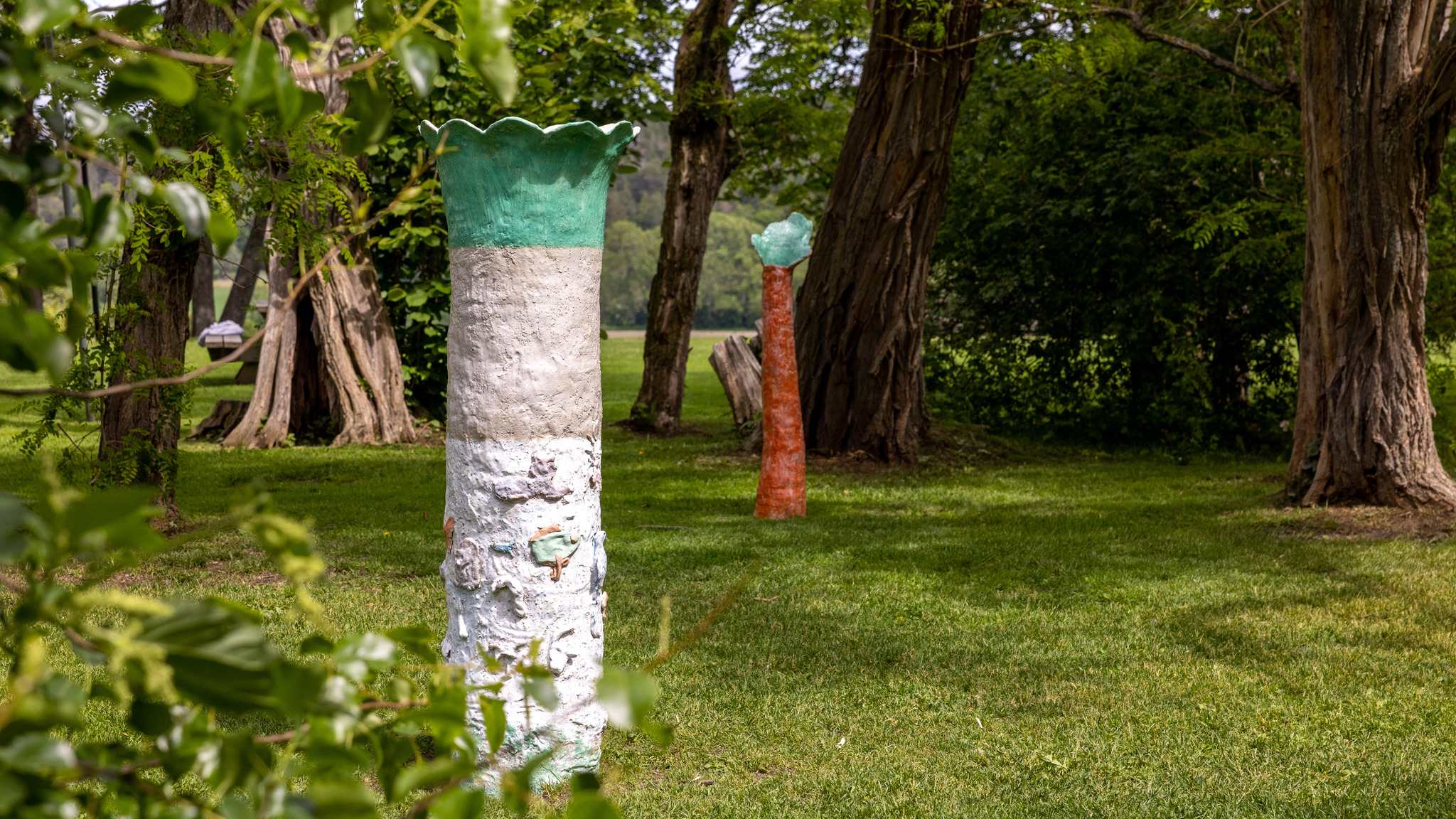

Master's programme in Art and Public Space
The transdisciplinary programme Art and Public Space is situated in the intersection between art practice and art theory. It recruits students from various fields of art practice. The programme allows students to explore the role of art in the public space through their own artistic practice and in an international student environment. The core of the programme relates to the development and production of art projects in public spaces, as well as analysis and exploration of art’s encounter with various types of public spaces, reception conditions and social structures.
As a student you will develop and produce your own art projects and investigate art in various public contexts. The studies provide you with wide-ranging practical and theoretical knowledge about art, as well as insight into methods of artistic research and development. The programme combines individual supervision with seminars, lectures and student-led study groups. The studies accommodate English-speaking students. The programme is a two-year, full-time course.
Programme description
This programme description is valid from the Autumn semester of 2017.
Brief programme description
The Master in Art and Public Space is a two-year artistic specialization in art in public space. The study programme also focuses on how art and artistic practice unfold in, function in and relate to various publics beyond the threshold of traditional art institutions.
Using a definition drawn from institutional art theory, ‘art in public space’ is understood as art that is intended for a public found outside the traditional spaces of art institutions (museums, galleries, the white cube, etc.).
The study programme is not medium-specific; it can therefore involve traditional artistic expressions as well as new or alternative practices stemming from outside the traditional field of art.
At the core of the study programme is the development and creation of art in public space, also analysis and exploration of the encounter between art and different types of public space, the conditions for reception and social structures. The programme provides practical and theoretical insight into the public sphere as a complex and diverse arena. The programme stimulates innovative thinking and an increase in artistic research in the field of art and public space, both nationally and internationally.
The study programme is adapted for students who only speak English. All courses and discipline-related choices are therefore open to students who do not speak Norwegian.
Admission requirements
Admission to the degree programme Master of Art and Public Space requires that the applicant has successfully completed a three-year bachelor’s degree in visual art or in a comparable educational programme that includes subjects, courses or groups of courses whereof at least 80 credits are related to and relevant for the programme Master of Art in Public Space.
The applicant’s qualifications, level and potential in relation to the master’s programme will also be evaluated on the basis of the applicant’s portfolio (artistic level) and a text which accounts for the applicant’s goals and motivation for applying to enrol in the study programme. Special emphasis is on the applicant’s demonstration of exploratory attitudes and an ability to delve into problematic areas, also to take initiative and have a large capacity for work.
All applicants must document good English skills.
Applicants can be called in for an interview.
Learning outcomes
On completion of the study programme, the student will:
- possess advanced knowledge about art in public space, its history, theory, methods, possibilities, function and roll
- be able to use knowledge about art in public space in his/her own practice as an artist and in other areas within the field of art have developed specialized knowledge about his/her own artistic project
- be able to identify and analyse critical artistic issues within the field of art and public space
- be able to establish himself/herself as an artist and work professionally with producing his/her own artistic projects in public space
- be able to identify, analyse and evaluate artistic, aesthetic and ethical issues which arise when art is presented in various public spaces
- be able to use suitable methods and tools from his/her artistic research in order to articulate, create and develop artistic projects in public space
- be able to identity and articulate the potential for further artistic research in his/her own master project
- be an independent, innovatively-thinking and knowledge-producing artist in national and international professional contexts
- be able to analyse, document and communicate to professional and general audiences about complex artistic issues and projects
- master artistic forms of expression and terminology relevant to the field of art in public space
- be able to formulate, discuss and collaborate with others regarding field-related reasoning, argumentation and ethical issues that arise when working with art in public space
Structure and progression
Exchange
It is possible to participate in a student exchange programme in the first semester of the second year. The student can also do an exchange in the form of ‘express mobility’, examples being participation in week-long workshops and other intensive courses.
The Department for Art and Craft is a member of several art-and-design school networks, examples being Cirrus, KUNO and Erasmus. Several schools in these networks offer relevant study programmes in the field of art and public space.
The study programme draws on international contacts and networks in its teaching.
These exchange agreements are valid for master's programme in art and public space:
Teaching and learning methods
Learning methods are linked to progression in the study programme: students start gaining theoretical insight into the subject matter at the same time as they acquire and use practical knowledge. The goal for the first year is to give students solid grounding and insight into issues pertinent to the field of art in public space, such that that knowledge can be used when they work on the independent project in the second year. The second year is centred on artistic practice: the main activity is to carry out the independent project. The goal is to have the students use the theoretical and practical knowledge acquired in the first year of study.
Teaching and learning happen through courses, practical and theoretical workshops, lectures, seminars and tutorials (both individually and in groups), as well as through independent, self-chosen work projects.
Languages of instruction are Norwegian and English.
Assessment
All courses are assessed as pass/fail.
The student must pass all courses in the given semester before progressing to the next.
The main part of the second year of study consists of doing independent work. This independent work will be assessed by a committee consisting of one internal examiner and two external examiners. The examiners also evaluate the professional level of the study programme as a whole.
See the individual course descriptions for more detailed information on assessment arrangements.
Further regulations for assessment and exams are stipulated in the document ‘Regulations Pertaining to Study Programmes at Oslo National Academy of the Arts’ (Forskrift om studiene ved Kunsthøgskolen i Oslo).
Quality assurance
Oslo National Academy of the Arts has systems for ensuring and developing the quality of all aspects of the education it provides. Students make important contributions to this work, not least through their participation in student evaluations and in the annual Learning Environment Survey.
Course structure
| Course code | Course name | ECTS Credits |
|---|---|---|
| KR503 | Master Project 1 Autumn | 10 |
| KR504 | Contextualizing 1 | 5 |
| KR505 | Artistic Research 1 | 5 |
| KR513 | Master Project 1 Spring | 10 |
| KR514 | Contextualizing 2 | 5 |
| KR515 | Artistic Research 2 | 5 |
| KR516 | Production 1 | 5 |
| KR517 | Communication 1 | 5 |
| KR526 | Production 2 | 5 |
| KR527 | Communication 2 | 5 |
| Course code | Course name | ECTS Credits |
|---|---|---|
| KR523 | Master Project 2 Autumn | 15 |
| KR524 | Contextualizing 3 | 5 |
| KR525 | Artistic Research 3 | 5 |
| KR533 | Master Project 2 Spring | 20 |
| KR534 | Contextualizing 4 | 5 |
| KR535 | Artistic Research 4 | 5 |
| KR537 | Communication 3 | 5 |
Admissions
The application deadline is February 01, 2026 23:59
About the Art and Craft department
The Art and Craft department offers an art training in the fields of ceramics, textile, print and drawing, metal and jewellery, art and public space.
